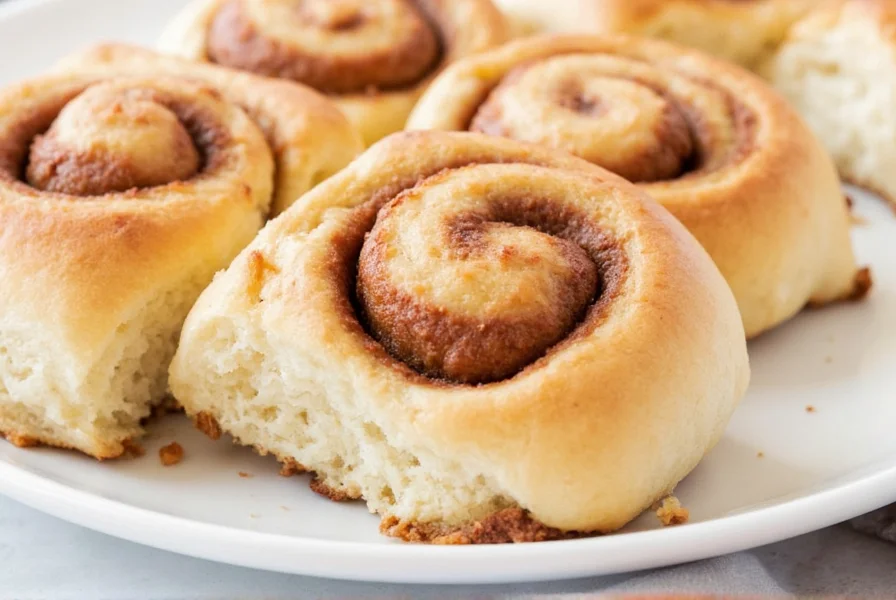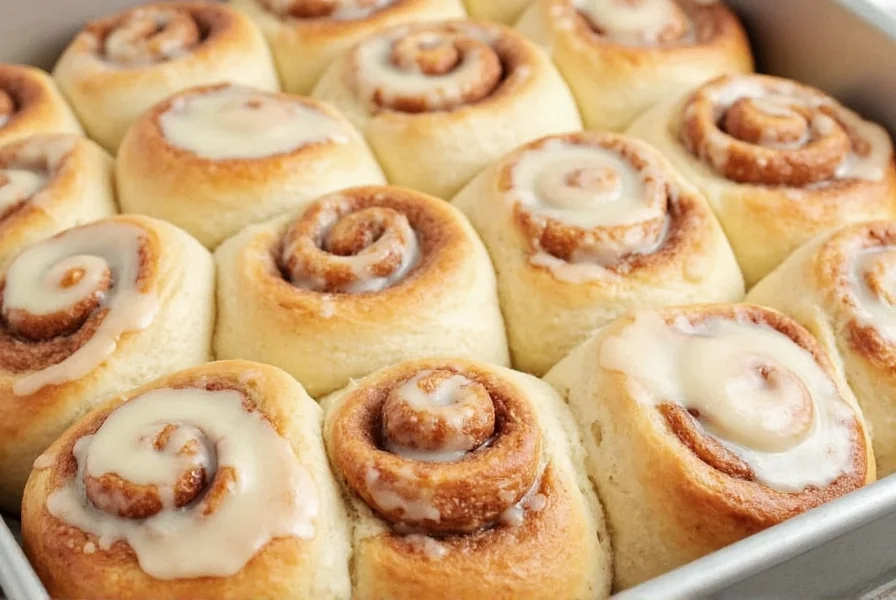Why This Gluten Free Cinnamon Roll Recipe Actually Works
Most gluten free cinnamon rolls fail because they're either too dense or fall apart. This recipe solves those problems through precise ingredient ratios and technique. Unlike many gluten free baking recipes that rely heavily on starches, this balanced approach uses a combination of rice flour, tapioca starch, and potato starch with the right amount of xanthan gum to mimic gluten's binding properties without gumminess.
Professional bakers know that gluten free dough requires different handling than wheat-based dough. The secret? Slightly higher moisture content and careful temperature control during rising. This easy gluten free cinnamon roll recipe accounts for these factors, giving you rolls that pull apart cleanly and maintain structure.
Gluten Free Flour Blend Science
Not all gluten free flour blends work equally well for yeast doughs. This recipe specifies measurements by weight (grams) for accuracy—critical in gluten free baking where small variations cause failure. The ideal blend contains:
| Ingredient | Purpose | Best Brands |
|---|---|---|
| Brown rice flour (60%) | Provides structure without heaviness | King Arthur Measure for Measure, Bob's Red Mill 1-to-1 |
| Tapioca starch (30%) | Adds chewiness and elasticity | Bob's Red Mill, Anthony's |
| Potato starch (10%) | Creates tender crumb | Ener-G, Hoosier Hill Farm |
| Xanthan gum (1.5 tsp) | Replaces gluten's binding function | Only needed if blend doesn't include it |
Using a homemade gluten free flour blend for cinnamon rolls gives better results than most commercial blends designed for cookies or cakes. The higher protein content in this ratio supports yeast development while preventing the "sand texture" common in failed attempts.
Step-by-Step Instructions for Perfect Rolls

Dough Preparation (45 minutes)
- Warm milk to 110°F (43°C)—too hot kills yeast, too cold won't activate it
- Mix yeast with sugar and warm milk; wait 5-7 minutes until foamy
- Whisk dry ingredients thoroughly (lumps cause uneven texture)
- Combine wet and dry ingredients; mix 2 minutes with stand mixer
- Cover and rest 20 minutes (gluten free dough needs this hydration period)
Rolling and Filling (20 minutes)
Unlike wheat dough, gluten free rolls shouldn't be rolled too thin. The ideal thickness is ¼ inch—thicker than traditional rolls but necessary for structural integrity. When spreading the filling, leave a ½-inch border to prevent leakage during baking.
Baking and Frosting (25 minutes)
Bake at 350°F (175°C) for 22-25 minutes until internal temperature reaches 190°F (88°C). Overbaking causes dryness—this soft gluten free cinnamon roll recipe depends on precise timing. Cool 15 minutes before frosting to prevent melting.
Troubleshooting Common Problems
Even with careful execution, issues can arise. Here's how to fix them:
- Crumbling rolls: Increase xanthan gum by ¼ tsp or reduce flour by 10g. Dough should feel slightly tacky but not stick to clean hands.
- Dense texture: Yeast was likely dead or dough didn't rise sufficiently. Ensure liquid temperature is 105-115°F (40-46°C).
- Collapsed rolls: Oven temperature too high. Use an oven thermometer to verify accuracy.
- Dry rolls: Overbaked or insufficient fat content. Try adding 1 extra tablespoon of butter to dough.
Storage and Reheating Methods
Gluten free baked goods stale faster than wheat-based versions. For best results:
- Store cooled rolls in airtight container with paper towel to absorb moisture
- Refrigerate for up to 5 days (moisture extends freshness)
- Freeze unbaked rolls: Place on parchment, freeze solid, then transfer to freezer bag. Bake from frozen, adding 8-10 minutes.
- Revive stale rolls: Microwave 10 seconds with cup of water beside them
Variations for Dietary Needs
This versatile gluten free cinnamon roll recipe adapts well to other restrictions:
- Dairy-free: Substitute butter with refined coconut oil and milk with oat milk
- Vegan: Add 1 tbsp ground flaxseed to dough and use maple syrup instead of honey in frosting
- Lower sugar: Reduce filling sugar to ⅓ cup and use monk fruit sweetener in frosting
- Nut-free: Ensure all ingredients are processed in nut-free facilities
Frequently Asked Questions
Can I make gluten free cinnamon rolls without xanthan gum?
No—xanthan gum is essential for structure in gluten free yeast doughs. Without it, rolls will crumble when pulled apart. If you have a sensitivity, try guar gum as substitute at 1:1 ratio, though results may be slightly less elastic.
Why did my gluten free cinnamon rolls collapse after baking?
This usually happens when oven temperature exceeds 360°F (182°C). Gluten free dough lacks gluten's structural network, so high heat causes rapid expansion then collapse. Always verify oven temperature with a separate thermometer.
How do I prevent gritty texture in gluten free cinnamon rolls?
Grittiness comes from improperly blended flours. Whisk dry ingredients for 2 full minutes before adding liquids, and let dough rest 20 minutes before rolling. Using superfine rice flour (like Authentic Foods brand) also prevents graininess.
Can I prepare gluten free cinnamon roll dough ahead of time?
Yes—refrigerate shaped rolls overnight. Place on parchment-lined pan, cover tightly, and refrigerate. Next morning, remove 1 hour before baking to come to room temperature. Do not freeze after shaping as texture suffers.











 浙公网安备
33010002000092号
浙公网安备
33010002000092号 浙B2-20120091-4
浙B2-20120091-4